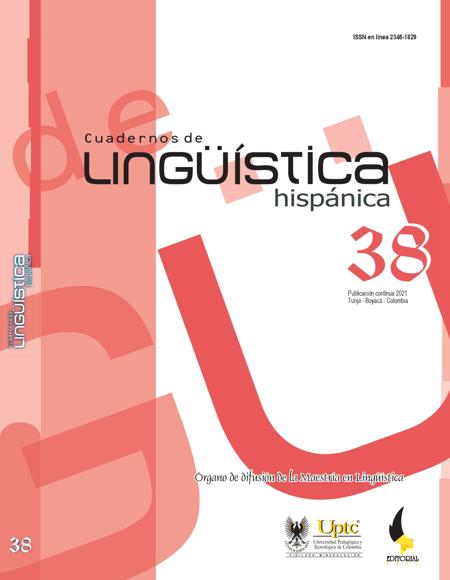Metaphors of War in Journalistic Media Texts about the Pandemic

Abstract
Texts published in journalistic media become guides in a world-wide
topic. This paper focuses on the warlike conceptualization of COVID-19,
based on analogies founded on disorder, decadence and invasion, which in
their composition corroborate how the concepts on which these texts are built
reflect a way of looking society, replicate it, and install it in the human body.
Our reflection is grounded on selected metaphors from scientific journalism
texts published on the internet between March and September 2020, which
reformulate complex information to bring it closer to a broad and nonspecialized audience. We emphasize the possibilities offered by metaphorical
representations to see one concept in terms of another and, at the same time,
we draw attention to the repetitive use of warlike images in which ideas about
battles, weapons, defenses, and attacks prevail, showing how the discourse of
authority and control underlies and is installed in the metaphor that instills
fear.
Keywords
pandemic, war, metaphor, science journalism
Author Biography
Mireya Cisneros Estupiñan
Últimas publicaciones:
- Muñoz-Dagua, C., Andrade-Calderón, M. C., & Cisneros-Estupiñán, M. (2015). Los indicios de la actitud en las interacciones orales en el aula universitaria. Folios, (42), 127-138.
- Olave-Arias, G., Rojas-García, I., Cisneros-Estupiñán, M. (2013). Deserción universitaria y alfabetización académica. Educación y educadores, 16(3), 55-471.
- Cisneros Estupiñán, M. & Pasuy Guerrero, G. Y. (2013). La narrativa conversacional como mecanismo de liderazgo y cohesión social. Poliantea, 7(13), 45-58.
Clarena Muñoz Dagua, CMD
Doctora en Lingüística de la Universidad de Buenos Aires. Profesora de la Universidad Colegio Mayor de Cundinamarca, Colombia. Autora de libros y artículos publicados en revistas nacionales e internacionales. Grupo Estudios del Lenguaje y la Educación, Categoría A1 de Minciencias.
References
- AFP (2020, 5 de mayo). El coronavirus, un agente de la globalización minúsculo pero superpotente. France 24. https://www.france24.com/es/20200505-elcoronavirus-un-agente-de-la-globalización-minúsculo-pero-superpotente
- Aristóteles. (2002). Retórica (A. Bernabé, trad.) (4.ª reimp.). Alianza.
- Aristóteles. (2006). Poética (E. Sinnot, trad.). Colihue.
- Ávila, k. (4-05-2020). El coronavirus como dispositivo. Efecto Cocuyo. https://www. opendemocracy.net/es/el-coronavirus-como-dispositivo/.
- Black, M. (1966). Models and Metaphors. Cornell University.
- Díaz-Rojo, J. A. (2005). Terminología médica, cultura e ideología. Quaderns de Filologia. Estudis Lingüístics, 10, 31-51. https://ojs.uv.es/index.php/qfilologia/article/view/5079
- DW.com (2020, 30 mar.). Coronavirus: nuevo frente en guerra por la información entre las potencias EE.UU., Rusia y China. DW. https://www.dw.com/es/coronavirus-nuevo-frente-en-guerra-por-la-información-entre-las-potenciasee-uu-rusia-y-china/a-52962487.
- DW.com (2021, 26 ene.). El coronavirus es democrático, pero sus consecuencias,no. DW. https://www.dw.com/es/el-coronavirus-es-democrático-pero-lasconsecuencias-no/a-56348620.
- Fuller, G. (1998). Cultivating Science. Negotiating Discourse in the Popular Texts of Stephen Jay Gould. In J. R. Martin & R. Veel (Eds.), Reading Science. Critical and Functional Perspectives on Discourses of Science (pp. 35-63). Routledge.
- Goatly, A. (1997). Languaje of Methafors. Routledge. DOI: https://doi.org/10.4324/9780203210000
- Guterres, A. (2020, 30 abr.). COVID-19: Lo superaremos juntos. https://www.un.org/es/coronavirus/articles/guterres-covid-19-expone-desigualdad-genero.
- Kövecses, Z. (2010). A New Look at Metaphorical Creativity in Cognitive Linguistics. Cognitive Linguistics, 21(4), 663–697. DOI: https://doi.org/10.1515/cogl.2010.021
- Kövecses, Z. (2015). Where Metaphors Come From: Reconsidering Context in Metaphor. Oxford University Press. DOI: https://doi.org/10.1093/acprof:oso/9780190224868.001.0001
- Kövecses, Z. (2021). Standard and Extended Conceptual Metaphor Theory. In X. Wen & J. Taylor (Eds.), The Routledge Handbook in Cognitive Linguistics (pp.191-203). Routledge. DOI: https://doi.org/10.4324/9781351034708-14
- Lakoff, G. (2007). No pienses en un elefante. Lenguaje y debate político. Complutense.
- Lakoff, G. & Johnson, M. (1986). Metáforas de la vida cotidiana. Cátedra.
- Langacker, R. (2015). Construal. In E. Dąbrowska & D. Divjak (eds.), Handbook of Cognitive Linguistics (pp. 120-142). De Gruyter Mouton. DOI: https://doi.org/10.1515/9783110292022-007
- Muñoz-Dagua, C. (2014). Metáfora interpersonal léxico-gramatical en la divulgación científica. Universidad Colegio Mayor de Cundinamarca.
- Muñoz-Dagua, C. (2018). La economía es un castillo de naipes. Arabismos en metáforas económicas. Revista del Hispanismo. Egipto Candil, 18(1), 104- 126. https://dialnet.unirioja.es/ejemplar/53032}
- Nathional Geographic, España. (2020, 5 de mayo). Descubren cómo penetra el
- coronavirus en las células humanas. https://www.nationalgeographic.com.es/ciencia/ descubren-como-penetra-coronavirus-celulas-humanas_15274.
- Navas, C. (3-07-2020). Consecuencias del coronavirus; la “siniestra” transformación
- que el Sars Cov2 provoca en las células humanas infectadas. BBC, News, Mundo. https://www.bbc.com/mundo/noticias-53265913.
- Organización Mundial de la Salud -OMS-. (2021). Brote de enfermedad por coronavirus (COVID-19). https://www.who.int/es/emergencies/diseases/ novel-coronavirus2019 gclid=CjwKCAjw49qKBhAoEiwAHQVToxTqyDzlZHdaryPzOKTUZLMuaC_fBhv7PDRgdPvBkfzXVitcjX1PDhoCybUQAvD_BwE
- Rojas, A. (2020, 20 abr.). COVID-19: La tercera guerra mundial. Pulzo.com https://www.
- pulzo.com/opinion/el-coronavirus-es-tercera-guerra-mundial-PP883950.
- Sabucedo, J., Alzate, M., & Hur, D. (2020). COVID-19 and the Metaphor of War. International Journal of Social Psychology, 3(35), 618-624. DOI: https://doi.org/10.1080/02134748.2020.1783840
- Samper, E. (2020, 22 mar.). Esto es lo que pasa cuando el coronavirus ataca tu cuerpo. El Diario. https://www.eldiario.es/sociedad/ataca-coronavirus-SARSCoV- 2-cuerpo humano_0_1008599325.html.
- Semana.com. (2020, 22 de mar.). Los gladiadores contra el coronavirus. Especiales Semana. https://especiales.semana.com/heroes-contra-el-coronavirus-encolombia- medicos-enfermeras-personal-sanitario/index.html
- Shannon, S. (29 de marzo 2020). La pandemia de coronavirus es realmente como una guerra.
- KevinMD. https://www.kevinmd.com/blog/2020/03/the-coronaviruspandemic- is-truly-like-a-war.html
- Sontag, S. (2017). La enfermedad y sus metáforas. El sida y sus metáforas. Penguin
- Random House.
